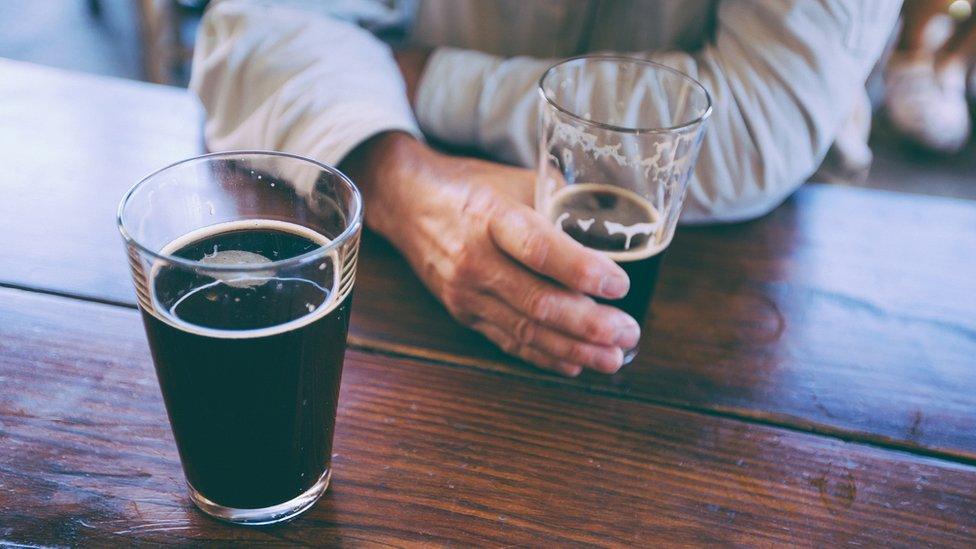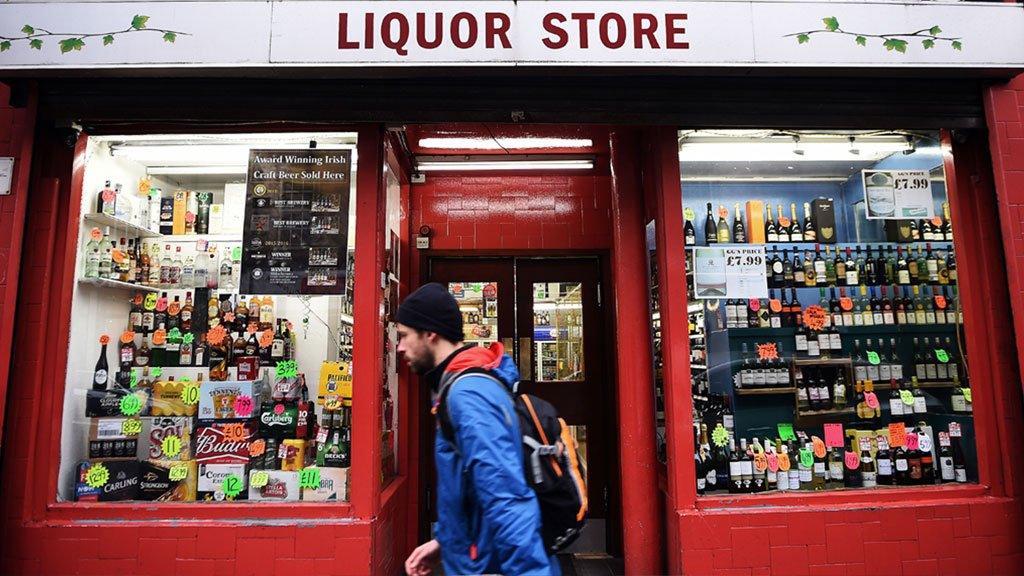Living in a cold, dark climate linked to heavy drinking
- Published
- comments

There are calls for restrictions on alcohol advertising in the winter months
People who live in cold climates with less sunlight could be more likely to drink heavily, according to a study.
US research has established a possible link between average temperature, hours of sunlight and alcohol consumption.
Data from 193 countries provided evidence climate contributed to a higher incidence of binge drinking and liver disease.
A Scottish doctor is now calling for restrictions in alcohol advertising during winter months.
Senior author Ramon Bataller, associate director of the Pittsburgh Liver Research Centre, said: "This is the first study that systematically demonstrates that worldwide and in America, in colder areas and areas with less sun, you have more drinking and more alcoholic cirrhosis."
'Links to depression'
Alcohol is a vasodilator, relaxing blood vessels and increasing the flow of warm blood to the skin.
Drinking also is linked to depression, which tends to be more prevalent when sunlight is scarce.
The study, published online in the Hepatology journal, used data from the World Health Organisation (WHO) and the World Meteorological Organisation.
Dr Peter McCann, medical adviser to Castle Craig Hospital, a residential drug and alcohol rehabilitation clinic in the Scottish Borders, contributed to the report, external.

The colder it is and the less sunlight we are exposed to, affects our consumption of alcohol
He said: "We now have new evidence that the weather, and in particular the temperature and amount of sunlight that we are exposed to, has a strong influence on how much alcohol we consume.
"Furthermore this weather-related alcohol consumption is directly linked to our chances of developing the most dangerous form of liver disease - cirrhosis - which can ultimately end in liver failure and death."
He added: "Stricter laws on alcohol pricing are surely justified when we consider the devastating combined effect of low sunlight and cheaper alcohol on consumption.
"Advertising laws should be addressed with restrictions during winter months strongly considered."
Evidence of the climate link comes as the WHO presents new data on alcohol consumption in Europe at a summit in Edinburgh on Monday.
It says levels remain high and that almost half of the adult male population are at risk of both short and long-term health and social problems due to harmful drinking patterns.
Conflicting research
One expert attending, Prof Jurgen Rehm from the Centre for Addiction and Mental Health, cast doubt on any link between temperature, light and alcohol consumption.
He told BBC Scotland that research in Europe had found the highest rates of alcohol consumption and harm in a central belt of countries such as Ireland, the UK, Germany and Poland.
Lower alcohol use was found in countries to the north - such as Norway, Sweden and Finland - and further south in places like Italy, Malta and Greece.
He said: "Basically, we have found within Europe that this correlation that has been found in another study globally, plays no role."
Earlier this year, legislation on minimum pricing for alcohol came into force in Scotland in a bid to tackle problem drinking.
Prof Rehm added: "Frankly, Scotland is the envy now of a lot of public health organisations, of a lot of politicians.
"It is so important that we have a country with minimum pricing that is not far away."
- Published1 May 2018
